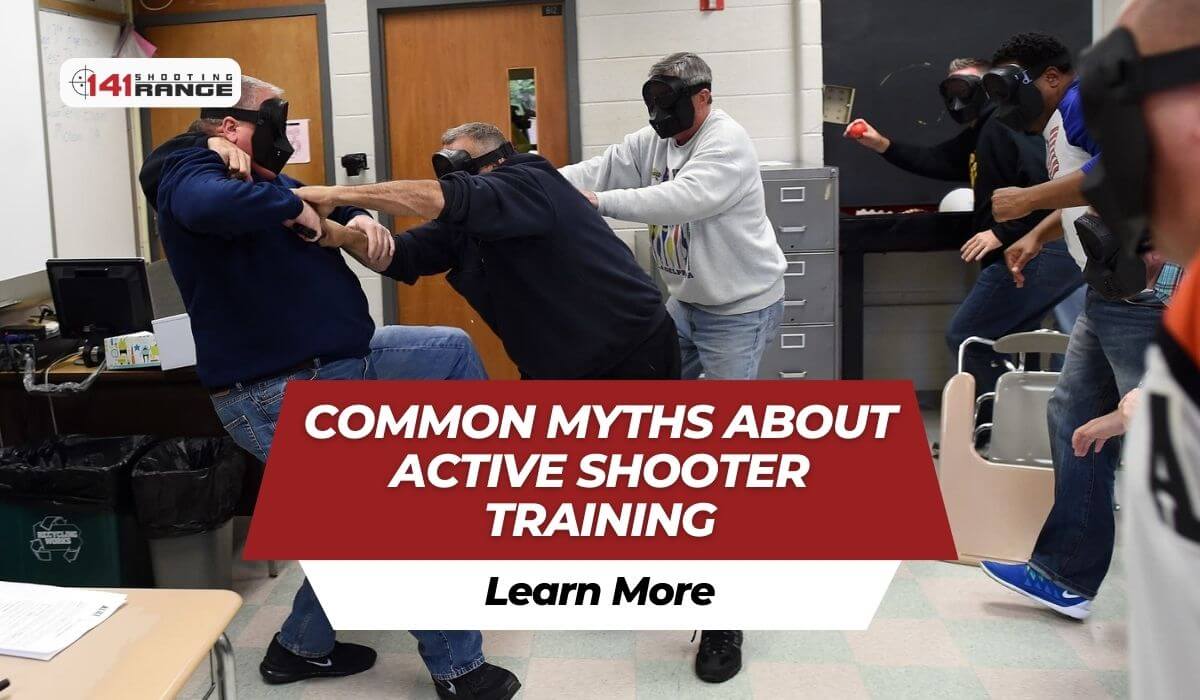Just How Active Shooter Training Boosts Emergency Situation Action Preparedness
Wiki Article
Discovering the Secret Components and Objectives of Efficient Active Shooter Training Programs
Energetic shooter training programs are critical in gearing up individuals and organizations with the needed abilities to react properly to potential threats. As we explore the ins and outs of these training programs, it comes to be obvious that recognizing their thorough nature is essential to enhancing safety measures and response capabilities.Importance of Active Shooter Training
Active shooter training programs are crucial for enhancing readiness and feedback despite prospective dangers. These programs aim to gear up people, companies, and areas with the expertise and abilities essential to efficiently react to active shooter scenarios. The enhancing frequency and intensity of such cases underscore the relevance of proactive procedures, as prompt and informed responses can significantly minimize harm.
Furthermore, these programs can aid reduce the anxiousness and fear that typically come with discussions concerning potential risks. By giving organized assistance and functional approaches, individuals acquire self-confidence in their capacity to react properly. Inevitably, the significance of active shooter training depends on its possible to conserve lives, reduce injuries, and cultivate a prepared and durable area efficient in facing unpredicted difficulties.
Key Components of Training Programs
Effective active shooter training programs generally incorporate several vital components developed to prepare individuals for real-world circumstances. The initial part is detailed education and learning on the nature of active shooter incidents, including data, study, and mental factors that affect assailants. This academic structure is important for promoting awareness and understanding amongst participants.Next, programs often consist of training on personal precaution, highlighting the "Run, Hide, Battle" approach. Participants learn just how to examine their environment, make fast decisions, and take appropriate activities during a situation. Furthermore, the inclusion of effective interaction skills is essential, as participants must recognize how to report cases and share important information with police.
Another crucial element is the participation of law enforcement or safety and security specialists, who give insights right into tactical responses and the value of cooperation throughout a situation. Additionally, programs should resolve the mental aftermath of an active shooter scenario, offering methods for coping and healing.
Finally, continuous training and refresher course courses are important to ensure that understanding stays existing and individuals feel confident in their abilities. Together, these crucial parts develop an all-around training program that furnishes people to react properly to an active shooter event.
Realistic Scenario Simulations
Reasonable situation simulations are a crucial element of energetic shooter training programs, supplying individuals with the possibility to participate in hands-on technique that mirrors possible real-life scenarios. These simulations boost the training experience by developing an immersive setting where people can use academic understanding in functional setups.Through using role-playing, simulated scenarios, and specialized training centers, participants experience the prompt challenges and stress these details factors connected with an active shooter incident. This method of training advertises fast decision-making, teamwork, and the application of safety protocols under stress. It permits -responders to establish crucial skills such as situational awareness, hazard analysis, and efficient emptying procedures.
In addition, practical simulations assist to identify potential weak points in participants' responses, allowing fitness instructors to provide targeted responses and enhance overall readiness. The consolidation of varying circumstances, including different areas and enemy profiles, better enhances the training experience, guaranteeing that participants are well-equipped to manage a variety of potential circumstances.
Ultimately, these simulations offer not only to advise but additionally to build self-confidence among individuals, fostering a sense of preparedness that is necessary for effective emergency situation reaction despite an active shooter danger. active shooter training.
Communication Methods in Training
Clear communication is crucial in energetic shooter training programs, as it directly influences the efficiency of response efforts throughout a crisis. Training participants have to understand the protocols and treatments that will direct their activities if faced with an energetic shooter situation. Developing clear lines of interaction ensures that all individuals entailed can relay info without delay and accurately.
Additionally, training programs ought to emphasize the significance of active listening - active shooter training. Participants need to be trained to interpret and reply to details successfully, lessening misunderstandings that could lead to dangerous scenarios. Routine feedback sessions Read Full Report post-training can also improve interaction techniques, guaranteeing that all participants really feel equipped to share their experiences and ideas for improvement. Inevitably, efficient communication approaches are necessary for preparing individuals to respond emphatically and cohesively when faced with an active shooter case.
Mental Preparedness Methods
Psychological readiness techniques are significantly acknowledged as essential parts of active shooter training programs. These strategies aim to outfit individuals with the psychological resilience needed to respond successfully in high-stress situations. By fostering a state of mind attuned to possible dangers, check it out individuals can better handle worry, anxiousness, and confusion throughout vital occurrences.Secret emotional preparedness methods include scenario-based training and tension vaccination workouts. Scenario-based training immerses participants in sensible simulations that resemble the turmoil of an energetic shooter occasion, enabling them to exercise decision-making under pressure. This direct exposure aids construct familiarity with emergency procedures, improving natural feedbacks.
Stress inoculation involves progressive exposure to stress-inducing situations, allowing people to create coping devices. This can consist of breathing workouts, visualization strategies, and cognitive restructuring to reframe adverse ideas. By incorporating these strategies, training programs can grow a feeling of self-confidence and control, which is important in dilemma circumstances.
Additionally, post-incident emotional assistance is critical to resolve the psychological results of an energetic shooter occasion. Integrating mental health resources into training programs not just prepares people for prompt feedbacks yet additionally advertises long-lasting psychological well-being, inevitably adding to a much safer and a lot more durable environment.
Conclusion

Report this wiki page